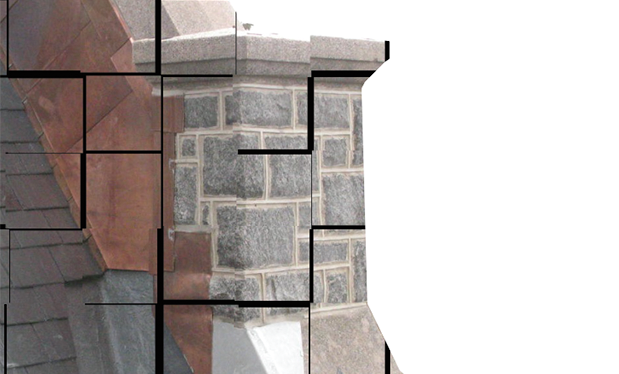Like most things in modern society, roofing products can affect the environment. Roof systems require a considerable amount of materials, and depending on the type of system installed, the lifespans of the materials can be about 20 years, requiring routine replacement and landfill space.
Fortunately, consumers have been asking for sustainable building products, and contractors and manufacturers are beginning to meet their needs.
Roofing material threats
About 8 billion people currently live on Earth and produce garbage daily. We have a limited amount of space in landfills, so it is imperative we consider how to reduce waste to conserve space for materials that cannot be reused or recycled. Considering the toxins and diseases that can be emitted as waste breaks down, it’s important the roofing industry increases use of recyclable and sustainably sourced materials.
The combination of negative health and environmental effects from unsustainable roofing products shows the importance of responsible product choice. Using third-party certified products helps because the certification process evaluates toxin levels and disposal processes.
Shifting consumer preferences
As a society, we are increasingly seeking ways to reduce our carbon footprints. With round-the-clock access to a plethora of information, consumers understand the significant roles companies play in protecting the environment. This has caused an increasing shift in consumer purchasing habits to support companies that operate sustainably and offer environmentally friendly products.
Roofing material manufacturers have an opportunity to meet this market demand by investing time and resources into creating a strong environmental, social and governance strategy. A strong position builds reputational preference with consumers, which may increase profits.
Manufacturers also should consider product transparency in this effort, providing information about what their products are made of, where their products are made and how their companies are operating sustainably.
It is imperative companies such as roofing material manufacturers invest in sustainable operations; be transparent; and have strong environmental, social and governance strategies to maintain their market shares. This becomes important as younger generations are increasingly concerned about the environment and becoming roofing customers.
Green: The color of sustainability
During the past several years, the architecture, engineering and construction industries have been trending toward sustainable building practices. This trend is expected to continue: A study, “2021 World Green Building Trends,” conducted by Dodge Data & Analytics showed 28% of respondents across the globe in the architecture, engineering and construction industries reported most of their projects are categorized as “green” projects. Additionally, 42% expect to reach the green project level within the next two years. The benefits of this trend trickle down to commercial real estate investors as they can save money through decreasing their material waste by using sustainable building practices.
Using third-party certified building products to build environmentally friendly structures can help achieve well-respected sustainability ratings.
Widely used sustainability ratings include:
- LEED®: A green building rating system used globally. Buildings that achieve this standard are proven to be healthy and energy-efficient built environments that also save costs.
- Living Building Challenge: An international rating based on energy, materials, water and other components that are self-sufficient and have positive effects on human and environmental health.
- WELL certification: A global rating system for all types of buildings that advance human health and well-being.
Commercial real estate developers and investors enjoy achieving these industry ratings because they add value to their properties. According to Youmatter.world, an online news media site with a focus on science, certified buildings are easier to rent and can be rented at a higher rate than noncertified buildings because human health and wellness certifications make the spaces more attractive to renters.
Green materials are considered safer materials because they typically carry fewer toxins and harmful chemicals than standard materials. This is especially important for companies that require office space and are focused on health and wellness within office-type work.
These are crucial factors to consider when evaluating whether a building will meet the needs of key stakeholders. The Environmental Protection Agency states standard buildings contribute to 30% of all greenhouse gases in the U.S. Green buildings typically use renewable and sustainable energy to operate, keeping utility costs down and decreasing greenhouse gas contribution.
The same Dodge Data & Analytics study shows green building owners and investors report an average of 10% reduced operating costs for the first year. That number is reported to increase to 16% within five years. Many certified buildings incorporate efficient lighting systems that consume less energy in conjunction with using natural light. Sufficient building insulation also helps decrease utility costs by reducing the overuse and need for monitoring thermostats.
Roofing materials can play a helpful role if they reflect sunlight substantially, reducing the need for additional air conditioning. Factors like this add value to commercial real estate investors’ properties because these factors can decrease operating costs and increase profit margins. Sustainable construction materials are increasingly demanded by building owners and construction project teams as a result of the high environmental impact of the built environment.
For articles related to this topic, see “Eco-friendly roofing,” July/August 2021 issue and “Stepping forward,” December 2018 issue.
Third-party certification
The most trusted way to verify, improve and showcase a product’s sustainability within the building products marketplace is through third-party certification.
For example, NSF® certification addresses the environmental impacts of roofing practices and materials, helping roofing contractors adapt to shifts in sustainable operations and products. By increasing transparency through third-party certification with certification bodies such as NSF, the roofing industry can adapt to meet market demand and stay competitive in an ever-evolving marketplace.
Earning a third-party sustainability certification, such as NSF/ANSI 347-Sustainability Assessment for Single Ply Roofing Membranes, demonstrates to consumers a product has undergone rigorous testing and evaluation.
As industry trends show the growing transition to sustainable buildings, third-party certification can help manufacturers stand out to construction teams seeking materials.
Additionally, third-party certification verifies a product’s sustainability claims. This allows certified products to better meet state and federal procurement guidelines as well as allows manufacturers to obtain preferred vendor status from government entities and other specifiers.For roofing materials, NSF/ANSI 347 is the leading national standard that evaluates products throughout their entire life cycles. Roofing products that fall into this category include EPDM, KEE, PIB, PVC and TPO membranes. NSF/ANSI 347 evaluates roofing products against established requirements in key areas, including product design, product manufacturing, membrane durability, corporate governance and innovation.
Sustainable practices
Efficiency gains can be realized for companies that operate in sustainable ways. In a manufacturing setting, this can be accomplished through understanding the supply chain of the raw materials used by evaluating how the materials are sourced and transported and how durable they are in the final product. All these factors contribute to a material’s environmental impact.
Additionally, sustainable manufacturing practices can allow companies to operate more efficiently during the production process with reduced energy use, water use and waste creation. Reductions like these can help a company operate more sustainably as well as save money during the manufacturing process.
In addition to purchasing sustainable raw materials, many companies are going a step further to reduce their carbon footprints and operating costs. Businesses are implementing simple yet sustainable business practices such as embracing natural light in their buildings rather than using electric bulbs.
Companies also are switching from paper documents to virtual forms, reducing the amount of paper and waste they create. Another popular but easy practice is shutting off all electronics, machines, lights and HVAC systems when leaving the building at the end of the workday. These simple adjustments can help businesses transition to operating more sustainably as well as help improve bottom lines.
Global collaboration
As an industry that helps construct buildings either through manufacturing the products or erecting the structures, we have a responsibility to operate in an increasingly sustainable way. One of the ways we can help negate the effects of climate change and depleting natural resources is to build long-lasting, quality structures with sustainable materials. By using third-party certified sustainable building products and practices, NSF and our clients contribute to making our planet healthier for future generations.
JUSTIN BROWN is senior manager of environmental products, NSF,® Ann Arbor, Mich.



